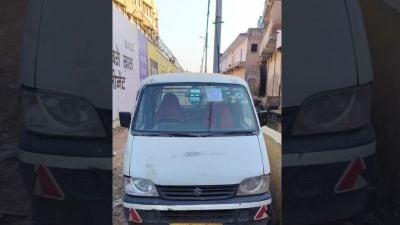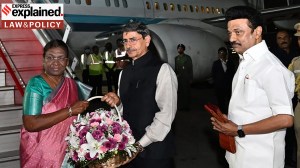MUL should select the bride before wedding preparations
NEW DELHI, January 23: While the impending competition in the small-car segment has galvanised Maruti Udyog Limited officials -- both from t...

NEW DELHI, January 23: While the impending competition in the small-car segment has galvanised Maruti Udyog Limited officials — both from the Government as well as the Suzuki side — to quicken the process of ordering equipment for their Rs 1,675 crore expansion project, they seemed to have missed a vital point. Though Suzuki submitted details of the proposed new engine as far back as June 1996, the two warring sides are yet to reach a formal agreement on this. The current engine is 15 years old. So while the plant for the car is expected to be ready by next January, the earliest the engine can be ready is four months after that. And this, provided the agreement for the engine is signed today. In other words, the wedding preparations are going on, but the bride still hasn’t been chosen!
This, in fact, is the area that the new heavy industry secretary P Shankar should focus on while he spends the coming days negotiating with various Suzuki officials on breaking the impasse at Maruti. There’s little point wasting time on trying to get Suzuki to withdraw the arbitration proceedings, or on withdrawing their opposition to R S S L N Bhaskaruddu as managing director — reports suggest that’s what Shankar and his colleagues such as Anup Mukherji are planning to do. Sure these are important issues. But, they’re also issues on which little immediate progress can be expected. Arbitration proceedings, for example, are one of the few levers which Suzuki holds over the government — it would be unrealistic to expect them to give it up so easily. Besides, the issue of whether Suzuki’s approval is required before the government can appoint a managing director or chairman is something that can be resolved only by arbitration. The point is that if they continue to waste time on this, instead of agreeing to the specifications of the engine, their new car will get delayed further — according to Suzuki officials, they require at least 15 months to get the new engine ready. Interestingly, when Suzuki submitted details of the newengine in June 1996, the ministry of industry voiced their opposition to the engine. It was only in September that the ministry said it would agree to the engine, but only after they conducted tests on the prototype. Suzuki was understandably upset as this called into question their abilities as automobile manufacturers — in any case, since the car also bears their name it was unlikely that they would supply a second-rate engine — but were still willing to go along. Maruti engineers then visited Suzuki’s factory in January 1997, and submitted their report to the board in March. After this, the new secretary Probir Sengupta (currently, the government-nominated chairman of Maruti) asked Suzuki to submit more details about the cost as well as the production-and-indigenisation schedule. This was submitted by Suzuki subsequently.
Sengupta also asked that tendering procedures be started for setting up the engine manufacturing facility. Which means that, for all practical purposes, the government has agreed to the new engine specifications. Yet, the fact is that no formal agreement has been signed on the matter.
Interestingly, this is not the only area that Maruti needs to get its act together. While it has certainly speeded-up the process of awarding tenders for the new plant, the fact is that orders have been given for under 45 per cent of the total value. Tenders have been received and evaluated by the tender committee for around 60 per cent of the plant, but these have to be approved by the board before being awarded. That’s after the board gave an in-principle approval to the project as early as September 1996. It took another six months after that to get an official approval for the project. Which means that it is close to a year after the formal and final approval was given, but the orders are still not fully placed. While that may not be terribly poor showing going by the standards of most PSUs, the fact is that Maruti is not a PSU. Or is it?
Photos


- 01
- 02
- 03
- 04
- 05





























